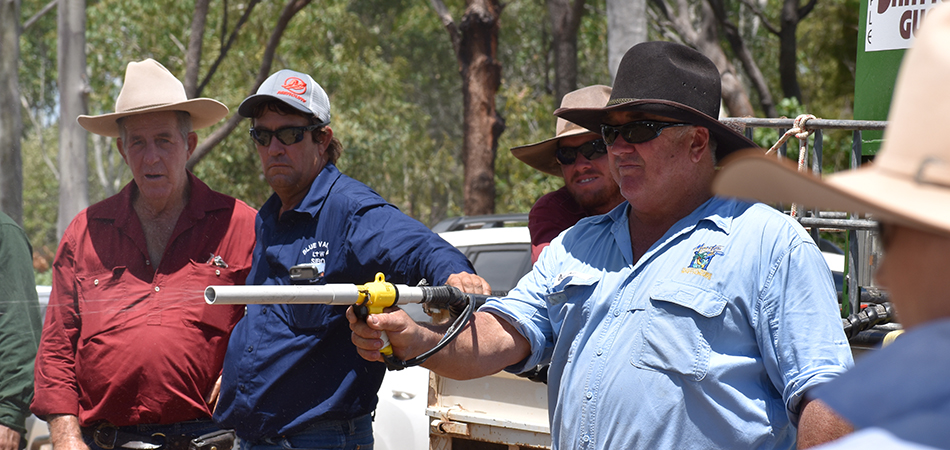
Demo sites test the practicality of technology on the farm
LDC has partnered with Meat & Livestock Australia (MLA) to develop producer demonstration sites that accelerate the adoption of key management practices and technologies that improve business profitability and productivity.
The producer groups are required to adapt, validate and demonstrate the business value of integrating on-farm management practices and new technologies into local farming systems.
They do this through monitoring and evaluation of the on-farm practice change.
The demonstration sites focus on:
- regenerative grazing practices (a five-year project); and
- an integrated approach to weed control (a three-year project).
The Bowen River Cluster Group is trialling a Epple Skattergun for controling small infestations of prickly acacia and other weeds. It’s an air compressor-powered device for shooting herbicide pellets and the trigger on the gun allows for measured individual doses or can remain engaged allowing a constant flow of herbicide. Pictured is cluster group member Owen Howard, of Hells Gate (right), and from left, cluster members Jim Hillier, Glenmore Station, and Greg Sibson, Blue Valley Station.
Flagstone Station manager Brett Scott (left) with Glenalpine Station grazier Barry O’Sullivan.

Integrated catchment-wide priority weed management group
The integrated catchment-wide priority weed management group includes six BBB properties.
The group is tackling the weeds of most importance to their area, exploring and, where practical, implementing a suite of options, including biological, mechanical and chemical controls, combined with best practices.
Identified priority weeds:
- Lantana (Lantana camara).
- Rubber vine (Cryptostegia grandiflora).
- Prickly acacia (Vachellia nilotica).
- Belly ache bush (Jatropha gossypifolia).
- Chinese apple (Ziziphus mauritiana).
The properties are measuring and comparing:
- relative costs of previous control and maintenance measures with the new practices;
- the areas of weeds treated and the comparative success rates for the new practices; and
- the number of new cooperative actions with neighbours and other land managers.
Link to the MLA Integrated catchment-wide priority weed management group’s field day that was held earlier this year on page 7 of this edition of The Grit.

Collinsville Region Regenerative Grazier Network

The Collinsville Region Regenerative Grazier Network includes four BBB properties.

The network is testing regenerative grazing practices across a wide range of environments and commercial scales, and will demonstrate how livestock can improve soil biology, and stimulate production of quality pasture through livestock impacts while improving herd performance.
Regenerative grazing practices will feature mobbing-up of cattle, planned grazing based on matching stock numbers to carrying capacity (forage production), high-density short duration grazes with long pasture recovery periods, and retaining suitable ground cover at the end of the dry season.

The practices require an integrated approach and all facets of the enterprise are equally important.
The project will provide critical herd performance, pasture management, and soil health data for the increasing number of graziers undertaking regenerative grazing practices in the Bowen and Collinsville areas.


